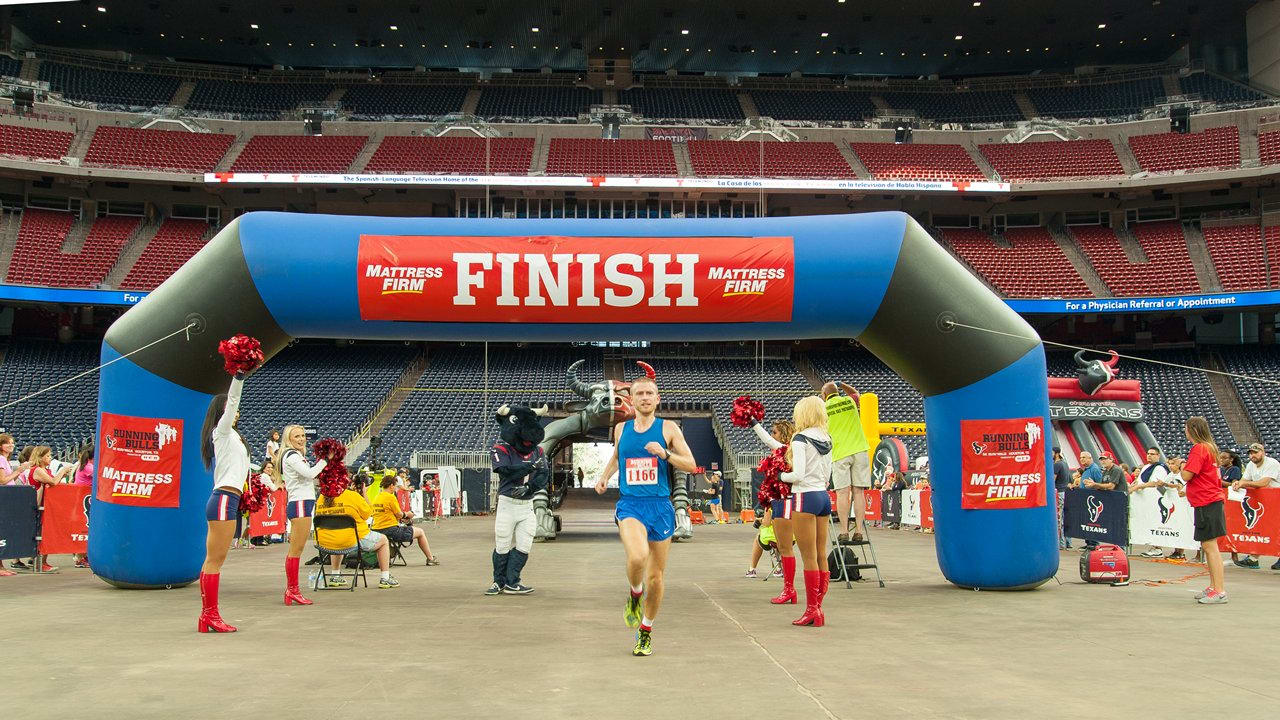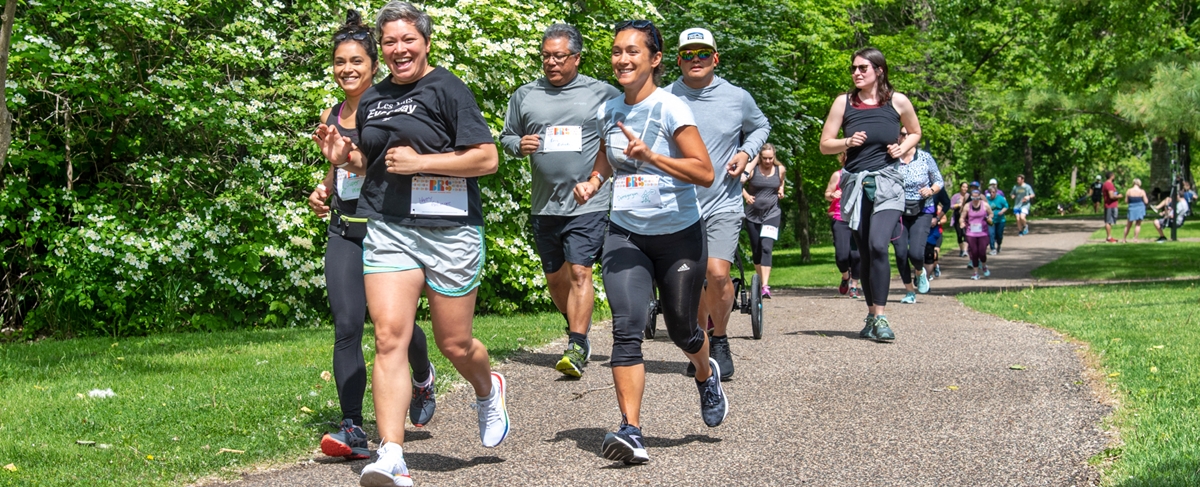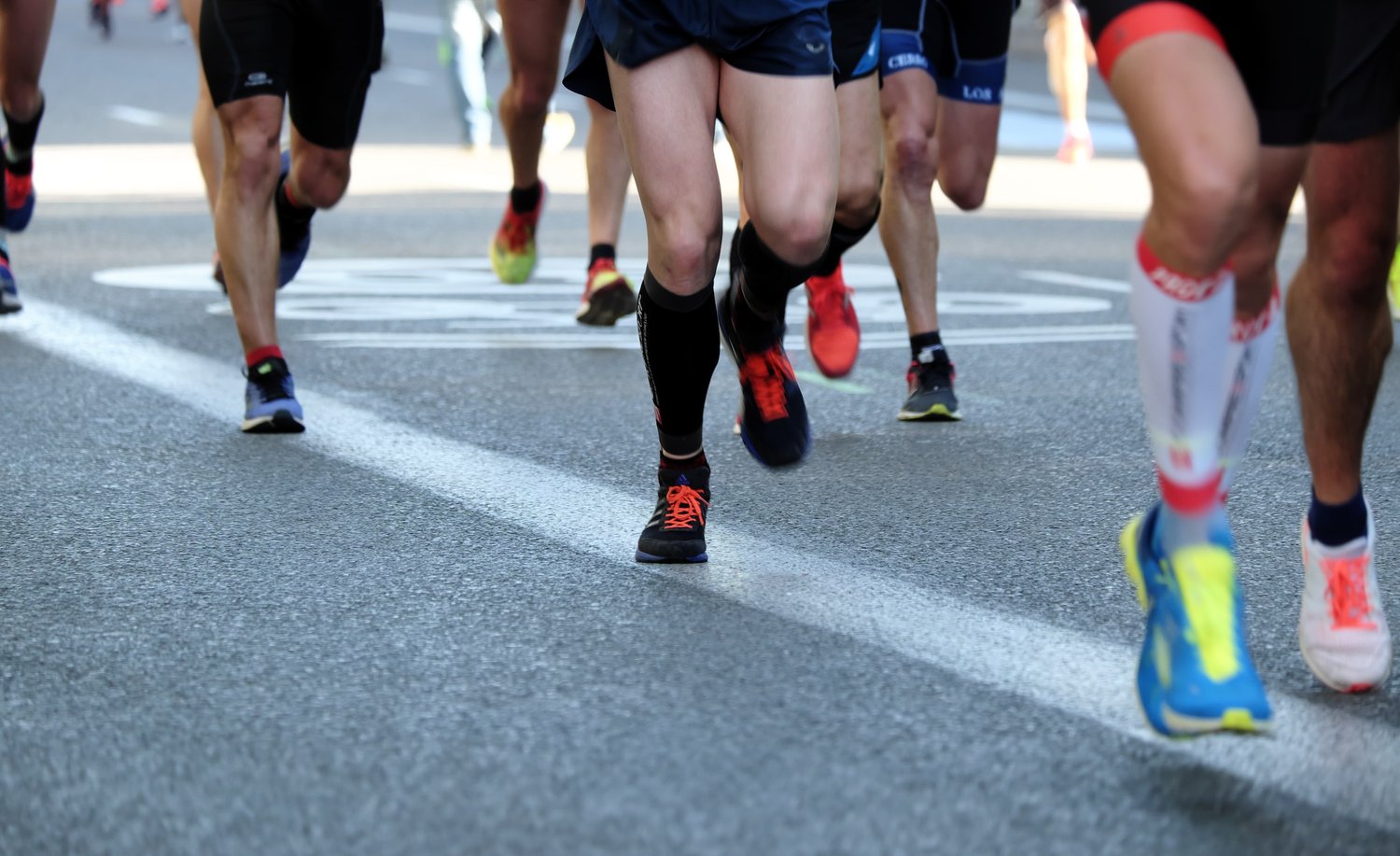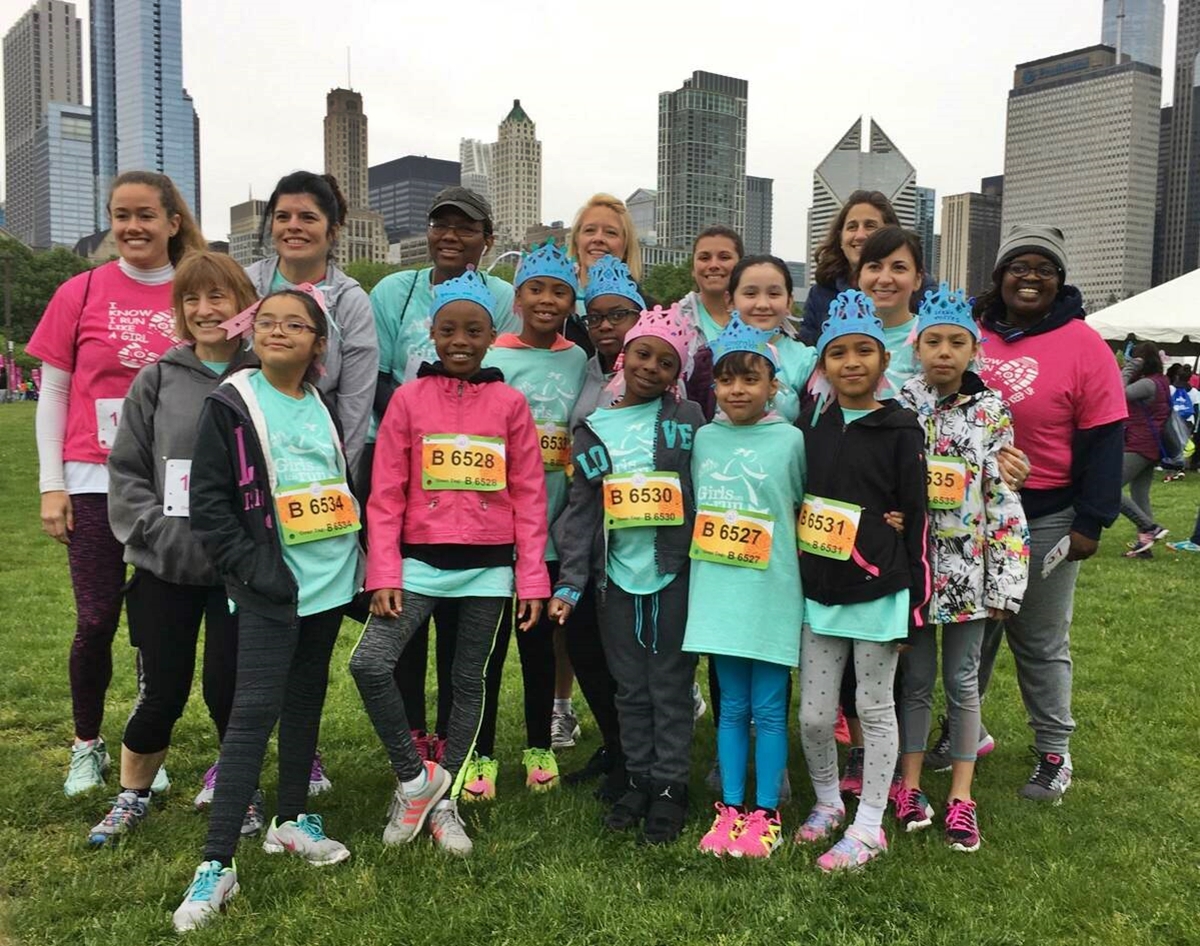

Featured
How To Get Sponsors For A 5K Run
Modified: August 19, 2023
Looking to get sponsors for your featured 5K run? Discover effective strategies and tips on how to secure sponsors for your event in this comprehensive guide.
Introduction
Welcome to this comprehensive guide on how to attract sponsors for a 5K run! Organizing a 5K run can be an exciting and fulfilling experience, but it’s important to secure sponsors to help cover costs and make your event a success. Sponsors not only provide financial support, but they also lend credibility and visibility to your event, increasing its overall impact.
Whether you’re organizing a charity run, a fun run, or a competitive race, this guide will provide you with step-by-step instructions on how to find and secure sponsors. By following these tips and strategies, you’ll be well on your way to forging valuable partnerships and ensuring the longevity of your 5K run.
Before diving into the specifics, it’s important to highlight the significance of sponsors for a 5K run. Sponsors not only contribute monetarily, but they also provide resources, products, and services that can enhance the event experience for participants. In return, sponsors benefit from exposure and brand visibility to a targeted audience.
Now, let’s move on to step one, where we’ll explore how to define your event and target audience.
Step 1: Define Your Event and Target Audience
The first step in attracting sponsors for your 5K run is to clearly define your event and identify your target audience. Having a well-defined event with a specific target audience will make it easier for sponsors to align themselves with your cause or message. Here’s how to get started:
- Set clear goals: Determine the purpose of your 5K run. Is it to raise funds for a charity, promote a cause, or simply encourage physical fitness? Clearly articulate your goals, as this will help you communicate the benefits of sponsorship to potential sponsors.
- Identify your target audience: Understand who will be participating in your 5K run. Are you targeting beginners, competitive runners, families, or a specific demographic? Knowing your target audience will allow you to tailor your sponsorship proposals and benefits accordingly.
- Create a unique selling proposition (USP): What sets your 5K run apart from other similar events? Identify what makes your event special and why sponsors should choose to support it. Whether it’s a scenic route, a theme, or a community-driven initiative, highlight your USP in your sponsorship materials.
By defining your event and target audience, you will have a clear understanding of what you can offer sponsors and who they will be reaching through their partnership with you. This will be crucial when approaching potential sponsors and crafting compelling sponsorship proposals.
Once you have defined your event and target audience, it’s time to move on to step two: creating a compelling sponsorship proposal.
Step 2: Create a Compelling Sponsorship Proposal
A well-crafted sponsorship proposal is essential in attracting sponsors for your 5K run. It serves as a persuasive document that outlines the benefits and opportunities of partnering with your event. Here are some tips to help you create a compelling sponsorship proposal:
- Research potential sponsors: Before creating your sponsorship proposal, conduct thorough research on potential sponsors. Look for companies or organizations whose values align with your event and target audience. This will increase the chances of getting a positive response.
- Highlight the benefits: Clearly outline the benefits that sponsors will receive by partnering with your 5K run. This could include prominent branding on event materials, exposure to a specific target audience, media coverage, or the opportunity to align with a charitable cause. Highlighting these benefits will make your proposal more attractive to sponsors.
- Offer customization: Tailor your sponsorship proposal to the needs and objectives of each potential sponsor. This shows that you have done your homework and increases the likelihood of securing their support. Be prepared to offer different levels of sponsorship opportunities to accommodate various budget sizes.
- Include a comprehensive event overview: Provide a brief but comprehensive overview of your 5K run, including the date, location, anticipated number of participants, and any unique features or activities. This will give potential sponsors a clear understanding of your event and its potential reach.
- Showcase your marketing and promotion plan: Explain how you will promote your 5K run and how sponsors will be featured in marketing materials, social media campaigns, and any other promotional avenues. This demonstrates your commitment to providing sponsors with maximum exposure.
- Include testimonials or success stories: If you’ve previously partnered with sponsors or have success stories from past events, include them in your proposal. This adds credibility and shows potential sponsors that you have a track record of delivering value.
Remember, your sponsorship proposal should be professional, well-designed, and visually appealing. It should clearly communicate the benefits of sponsorship and showcase the unique opportunities available to potential sponsors.
Once you have created an impressive sponsorship proposal, it’s time to move on to step three: researching potential sponsors.
Step 3: Research Potential Sponsors
Researching potential sponsors is a crucial step in attracting the right partners for your 5K run. By identifying companies or organizations whose values align with your event, you increase the likelihood of securing their support. Here’s how to research potential sponsors effectively:
- Identify relevant industries: Start by identifying industries or sectors that have a natural connection to your event. For example, if your 5K run is focused on promoting a healthy lifestyle, consider reaching out to fitness or health-related companies.
- Study local businesses: Look for local businesses in your area that might be interested in sponsoring your event. Local businesses often value community engagement and are more likely to support events happening in their vicinity.
- Utilize online resources: Take advantage of online resources such as business directories, industry forums, and social media platforms to identify potential sponsors. These platforms provide valuable information on companies, their products/services, and recent initiatives.
- Check previous event sponsors: Review the sponsors who have supported similar events in the past. They might be interested in partnering with your 5K run as well. Look for local races, charity runs, or fitness events in your area to gather a list of potential sponsors.
- Consider personal connections: Tap into your personal and professional network to identify potential sponsors. Reach out to friends, family, colleagues, and acquaintances who might have connections to businesses that align with your event’s objectives.
As you research potential sponsors, take note of their values, mission statements, and current initiatives. Look for alignment between their goals and those of your 5K run. This will help you understand how your event can provide value to their organization.
Once you have a list of potential sponsors, it’s time to move on to step four: approaching them with your sponsorship proposal.
Step 4: Approach Potential Sponsors
Approaching potential sponsors is an important step in securing their support for your 5K run. It’s crucial to make a positive and convincing impression when reaching out to potential sponsors. Here are some strategies to keep in mind when approaching sponsors:
- Personalize your outreach: Take the time to research each potential sponsor and personalize your communication. Address them by name and mention specific reasons why you believe they would be a good fit for your event. This shows that you have done your homework and are genuinely interested in partnering with them.
- Use multiple communication channels: Reach out to potential sponsors through various communication channels, including email, phone calls, and social media. This increases the chances of getting their attention and receiving a response. Be persistent but polite in your follow-ups.
- Highlight mutual benefits: Clearly articulate the benefits that sponsorship will bring to both parties. Emphasize how the partnership will help the sponsor achieve their marketing, branding, or corporate social responsibility goals. Make it a win-win proposition.
- Be professional and persuasive: When communicating with potential sponsors, maintain a professional tone and presentation. Clearly explain the value your 5K run can offer and how sponsorship will contribute to its success. Use persuasive language and compelling statistics to grab their attention.
- Offer tiered sponsorship opportunities: Provide potential sponsors with different levels of sponsorship opportunities to fit their budget and objectives. This allows them to choose the level of involvement that aligns with their resources and desired impact.
- Request a meeting or phone call: Once you have sparked initial interest, request a meeting or phone call to discuss the details of the sponsorship further. This personal interaction can strengthen the relationship and provide an opportunity for both parties to ask questions and clarify expectations.
Remember, the key is to make a compelling case for why potential sponsors should support your 5K run. By personalizing your outreach, showcasing mutual benefits, and maintaining a professional approach, you increase the likelihood of securing sponsorship.
Once potential sponsors show interest, it’s time to move on to step five: negotiating sponsorship deals.
Step 5: Negotiate Sponsorship Deals
As potential sponsors express interest in supporting your 5K run, it’s time to engage in negotiations to finalize the sponsorship deals. Negotiating sponsorship deals allows you to clarify expectations, set commitments, and determine the mutual benefits of the partnership. Here are some tips to navigate the negotiation process:
- Understand sponsor objectives: During negotiations, take the time to fully understand the objectives and expectations of the potential sponsor. What are they hoping to achieve through the partnership? By gaining a clear understanding of their goals, you can tailor the sponsorship package to meet their needs.
- Define sponsorship benefits: Outline the specific benefits and deliverables that the sponsor will receive in exchange for their support. This could include logo placement, naming rights, VIP experiences, or exclusive marketing opportunities. Make sure these benefits are aligned with the sponsor’s objectives.
- Discuss financial considerations: Negotiate the financial aspect of the sponsorship deal, taking into consideration the sponsor’s budget and the value that your 5K run provides. Be open to negotiation and find a mutually beneficial agreement that satisfies both parties.
- Identify additional opportunities: Look for additional opportunities where the sponsor can gain exposure or engage with the participants beyond the initial sponsorship package. This could include hosting a booth, conducting product demos, or providing exclusive offers to participants.
- Document the agreement: Once the negotiation is finalized, ensure that all agreements are clearly documented in a formal contract. This protects both parties and provides a clear reference for the terms of the sponsorship.
- Maintain open communication: Continue to communicate openly with the sponsor throughout the negotiation process. Address any concerns or questions they may have and be flexible in finding solutions that work for both parties.
Remember that negotiations should be a collaborative process that aims to create a win-win situation for both you and the sponsor. By understanding their objectives, defining sponsorship benefits, discussing financial considerations, and maintaining open communication, you can successfully negotiate sponsorship deals for your 5K run.
Once the sponsorship deals are negotiated and agreed upon, it’s time to move on to step six: providing sponsor benefits and recognition.
Step 6: Provide Sponsor Benefits and Recognition
Once you have secured sponsorship for your 5K run, it’s essential to follow through on your commitments by providing the agreed-upon benefits and recognition to your sponsors. This step is crucial for maintaining strong relationships and ensuring the continued support of sponsors in future events. Here’s how to fulfill your obligations:
- Deliver on agreed benefits: Ensure that you provide all the benefits outlined in the sponsorship agreement. This could include logo placement on event materials, mentions in social media posts, or prominent signage at the event. By fulfilling these commitments, you demonstrate your professionalism and reinforce your value as a partner.
- Recognize sponsors publicly: Give sponsors the recognition they deserve by publicly acknowledging their support. This can be done through verbal announcements during the event, signage displaying their logos, or mention in press releases and media coverage. Showing appreciation will strengthen your sponsor relationships and increase the likelihood of continued support.
- Create sponsor appreciation events: Organize special events or activities to express your gratitude to sponsors. This could include exclusive VIP experiences, sponsor thank-you dinners, or behind-the-scenes tours of the event. These gestures go a long way in building strong relationships and fostering a sense of loyalty.
- Share post-event reports and analytics: Provide sponsors with post-event reports and analytics that highlight the impact and reach of the 5K run. This could include the number of participants, social media impressions, media mentions, and overall event feedback. Offering tangible evidence of the event’s success will further validate the sponsors’ investment.
- Cultivate ongoing relationships: Stay in touch with sponsors beyond the event. Update them on any relevant news or developments related to your organization or future events. Foster relationships by maintaining open lines of communication and seeking feedback on how you can improve the sponsorship experience in the future.
Remember, providing sponsor benefits and recognition is not just about fulfilling your obligations—it’s an opportunity to exceed expectations and foster long-term partnerships. By delivering on your commitments, recognizing sponsors publicly, creating appreciation events, sharing post-event reports, and cultivating ongoing relationships, you will solidify your position as a reliable and valuable partner.
With the sponsor benefits and recognition taken care of, it’s time to move on to step seven: maintaining relationships with sponsors.
Step 7: Maintain Relationships with Sponsors
Maintaining strong and ongoing relationships with sponsors is essential for the long-term success of your 5K run. Cultivating these relationships ensures continued support, opens doors for future collaborations, and strengthens your event’s reputation. Here’s how you can effectively maintain relationships with your sponsors:
- Provide regular updates: Keep sponsors informed about the progress of your organization and any upcoming events or initiatives. This demonstrates your commitment to transparency and keeps sponsors engaged and connected.
- Seek feedback: Regularly reach out to sponsors to gather their feedback on their experience partnering with your 5K run. Ask for suggestions or improvements for future events and make them feel included in the planning process.
- Offer exclusive perks: Provide special benefits and perks to returning sponsors as a way to show appreciation for their continued support. This could include priority booth placement, discounted sponsorship rates, or exclusive networking events.
- Collaborate on marketing initiatives: Explore opportunities to collaborate on marketing initiatives with your sponsors. This could include joint social media campaigns, co-branded content, or cross-promotion. By leveraging each other’s networks, you can amplify your reach and exposure.
- Celebrate milestones together: Recognize important milestones or achievements of your sponsors and celebrate them publicly. This could include sharing success stories, featuring sponsors in your newsletter, or organizing a special event to highlight their accomplishments.
- Stay connected through networking events: Organize networking events or sponsor appreciation gatherings to provide sponsors with the opportunity to connect with each other and build relationships. These events can foster a sense of community and strengthen the bond between sponsors and your organization.
Remember, maintaining relationships with sponsors requires consistent effort and communication. By providing regular updates, seeking feedback, offering exclusive perks, collaborating on marketing initiatives, celebrating milestones, and organizing networking events, you can cultivate strong and long-lasting relationships with your sponsors.
With your sponsor relationships thriving, it’s time to move on to step eight: evaluating the success of your sponsorship efforts and seeking feedback.
Step 8: Evaluate Success and Seek Feedback
After your 5K run and sponsorship efforts have concluded, it’s important to take the time to evaluate the success of the event and gather feedback from both participants and sponsors. This step will help you identify areas for improvement and ensure that future events are even more successful. Here’s how to effectively evaluate your sponsorship efforts:
- Analyze sponsor ROI: Assess the return on investment (ROI) for your sponsors by analyzing the benefits they received and their impact on their marketing goals. Review key metrics such as brand visibility, social media impressions, website traffic, and leads generated. This data will help you demonstrate the value of sponsorship to potential sponsors in the future.
- Conduct participant surveys: Create surveys for participants to gather their feedback on the event and its sponsors. Ask about their impression of the sponsors, the impact of their involvement, and their overall satisfaction with the event. Pay attention to any constructive criticisms or suggestions for improvement.
- Request sponsor feedback: Reach out to sponsors directly and ask for their feedback on their experience partnering with your 5K run. Inquire about their satisfaction with the sponsorship benefits, the communication process, and any suggestions they may have for future collaborations. Ensure they feel heard and valued.
- Identify areas of improvement: Analyze the feedback received from participants and sponsors to identify areas where you can improve for future events. This could include refining sponsorship packages, streamlining communication processes, or enhancing sponsor recognition opportunities. Use this feedback to enhance the overall sponsorship experience.
- Appreciate and recognize sponsors: Show your appreciation to sponsors for their participation and support. Send personalized thank-you notes, publicly acknowledge their contributions, and share the success of the event with them. Continued recognition and appreciation will strengthen the bond between sponsors and your organization.
- Document lessons learned: Document the lessons learned from your sponsorship efforts and event evaluation. This will serve as a valuable resource when planning future events and approaching potential sponsors. Reflecting on your successes and challenges will help you refine your strategy and improve your sponsorship program.
Remember, evaluating the success of your sponsorship efforts and seeking feedback is a continuous process. By analyzing sponsor ROI, conducting participant and sponsor surveys, identifying areas of improvement, appreciating and recognizing sponsors, and documenting lessons learned, you can enhance your sponsorship program and ensure future success.
With these steps completed, you have successfully attracted sponsors for your 5K run. By applying these strategies, maintaining strong relationships, and continuously evaluating and improving your sponsorship program, you can create lasting partnerships that contribute to the long-term success of your event.
Conclusion
Congratulations on reaching the end of this comprehensive guide on how to attract sponsors for a 5K run! By following the steps outlined in this article, you have gained valuable insights and strategies to successfully secure sponsorships for your event.
Throughout this guide, we explored the importance of defining your event and target audience, creating a compelling sponsorship proposal, researching potential sponsors, approaching them effectively, negotiating sponsorship deals, providing sponsor benefits and recognition, maintaining relationships, and evaluating the success of your efforts.
Remember, attracting sponsors is about creating a mutually beneficial partnership. Sponsors not only provide financial support but also lend credibility, resources, and visibility to your event. By clearly articulating the benefits, offering customization, and showcasing the value your event provides, you can capture the interest of potential sponsors.
Once sponsors have come onboard, it’s crucial to fulfill your commitments, provide recognition and appreciation, and maintain open lines of communication. By cultivating strong relationships, you increase the likelihood of long-term support and collaboration.
Don’t forget to evaluate the success of your sponsorship efforts and gather feedback to continually improve your sponsorship program and future events. By analyzing data, listening to participants and sponsors, and learning from your experiences, you can optimize your sponsorship strategy and enhance the overall event experience.
As you embark on your journey of attracting sponsors for your 5K run, remember to be persistent, adaptable, and creative in your approach. Every sponsorship opportunity is unique, and by putting in the effort to understand your event’s value and effectively communicate that to potential sponsors, you increase your chances of securing their support.
Best of luck in your upcoming 5K run and may your sponsorships contribute to a memorable and successful event!








